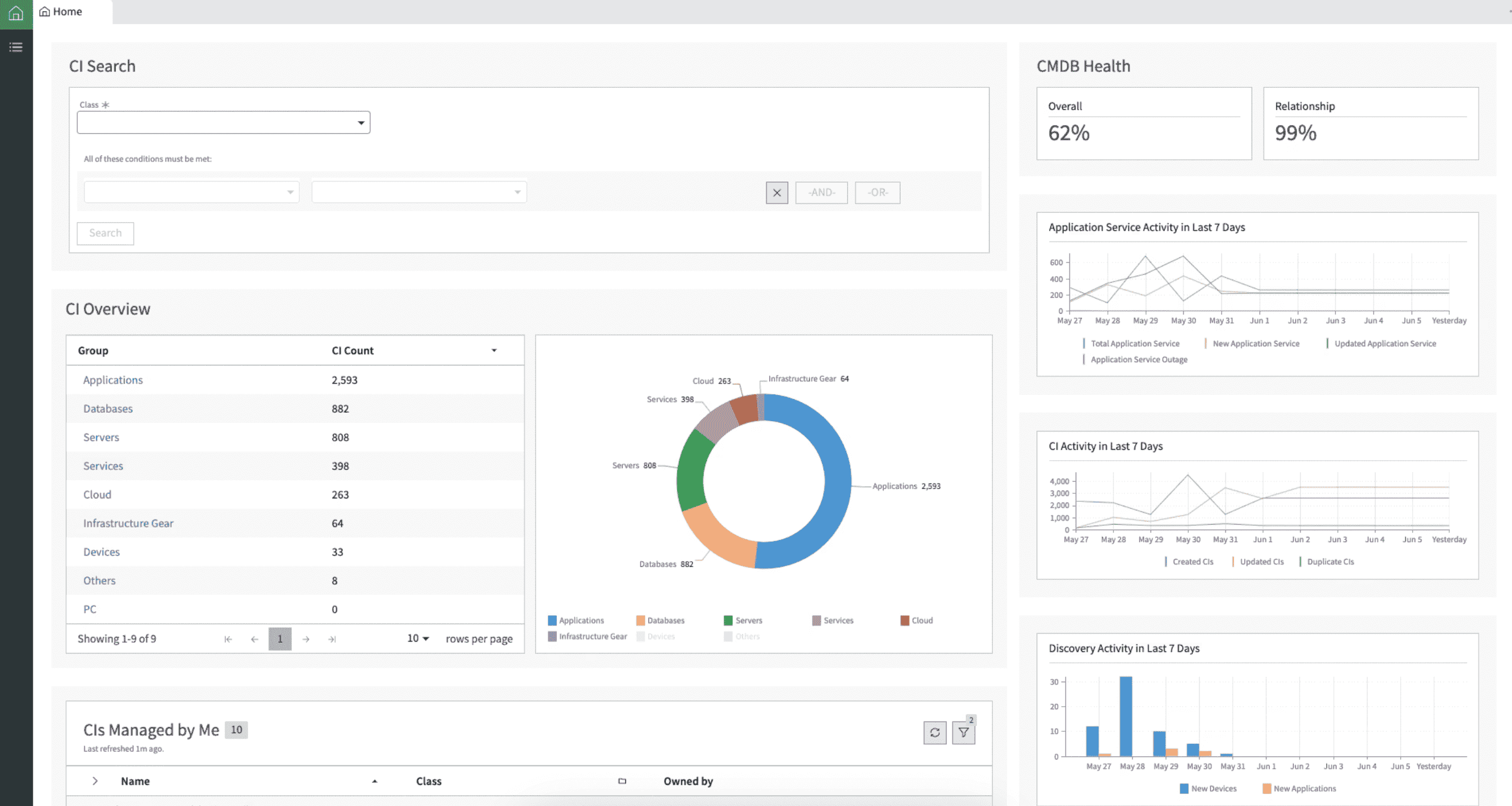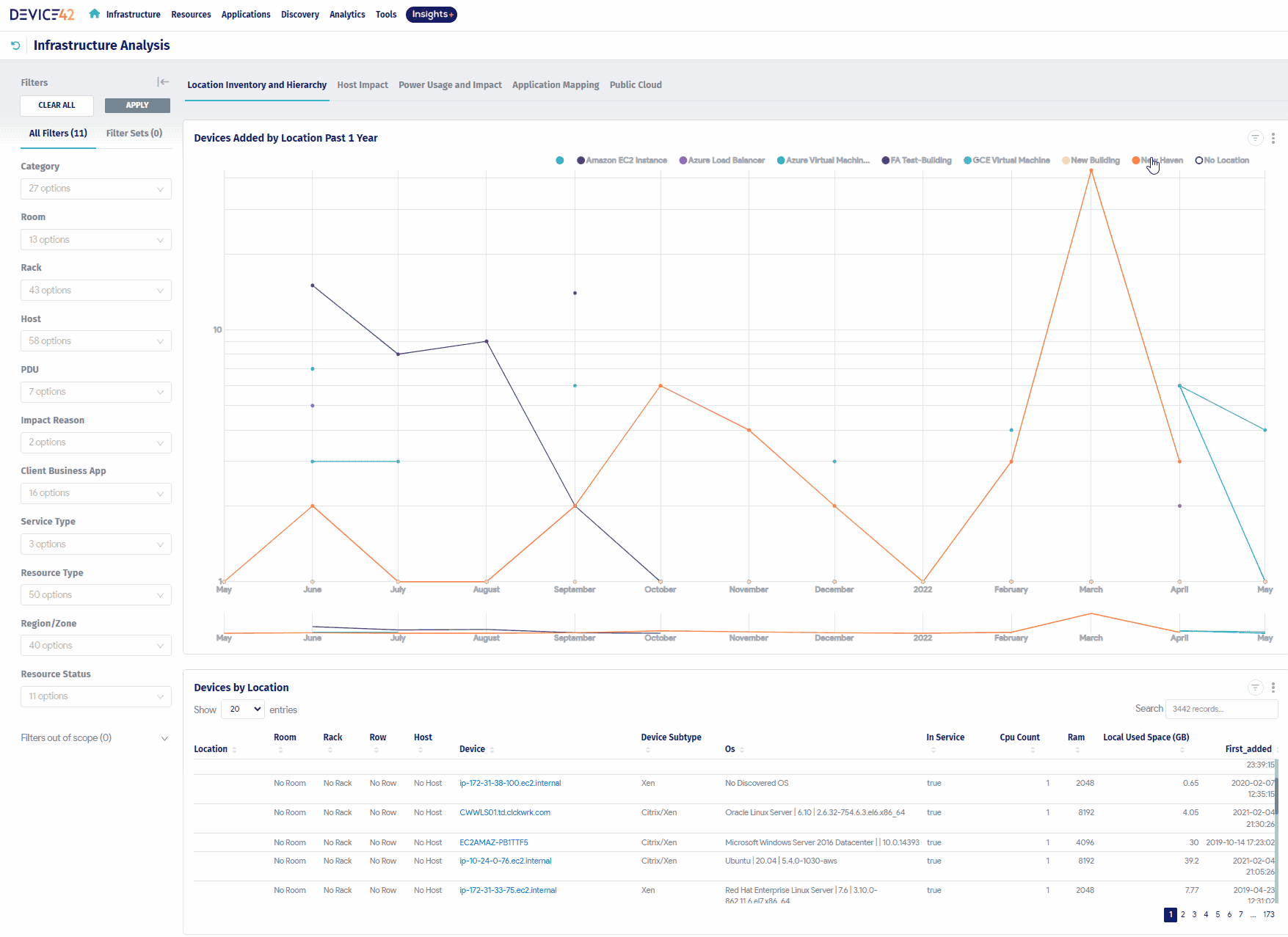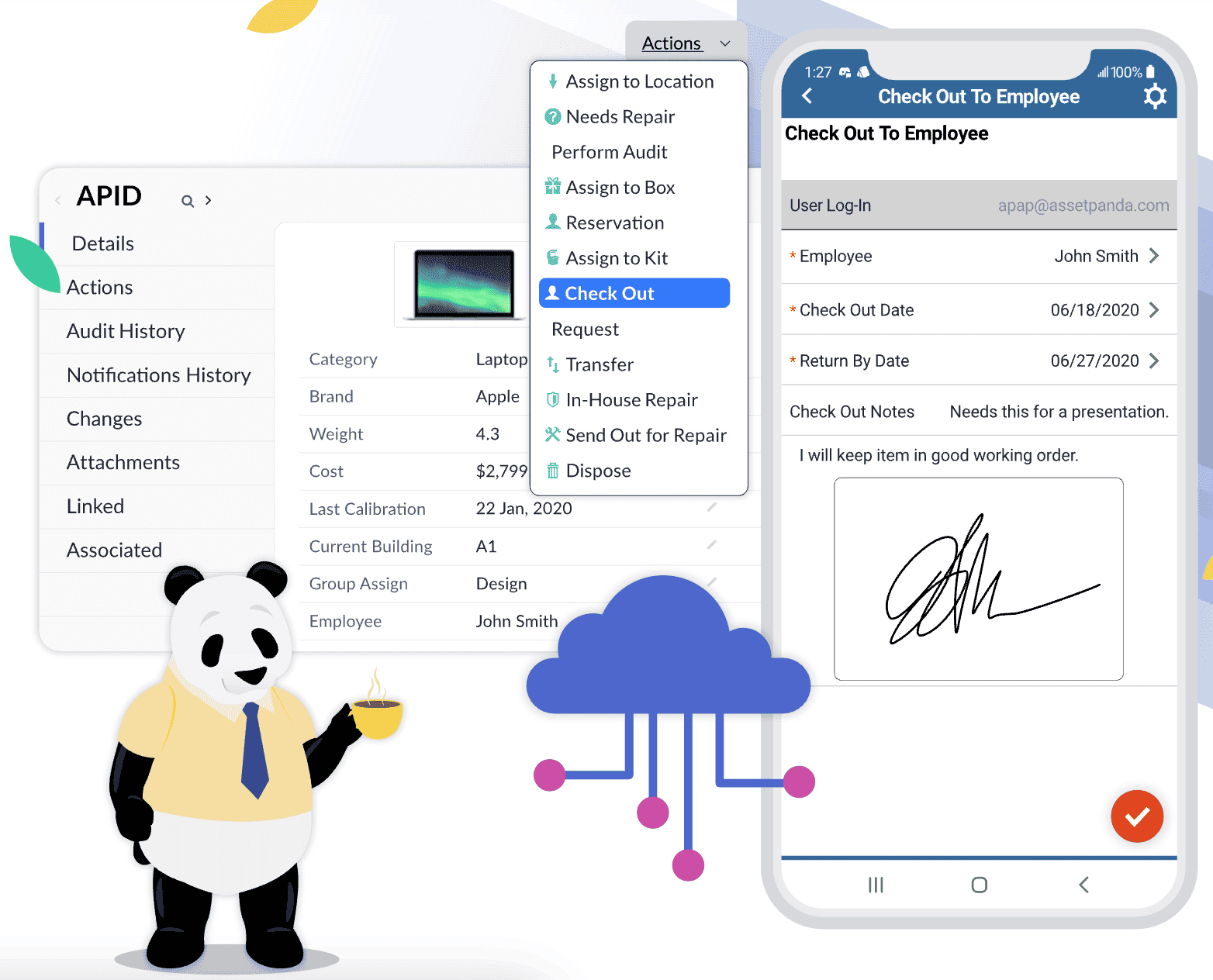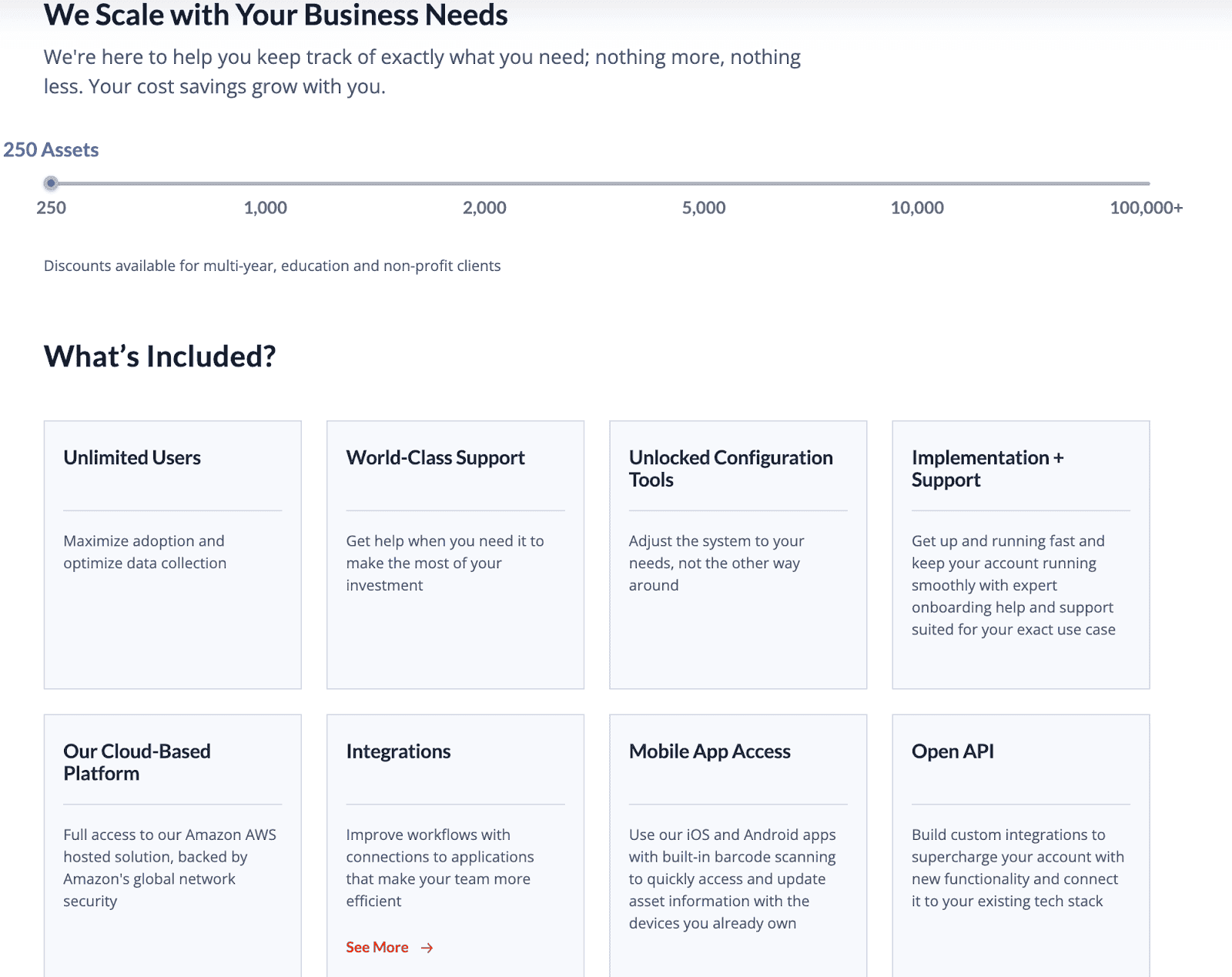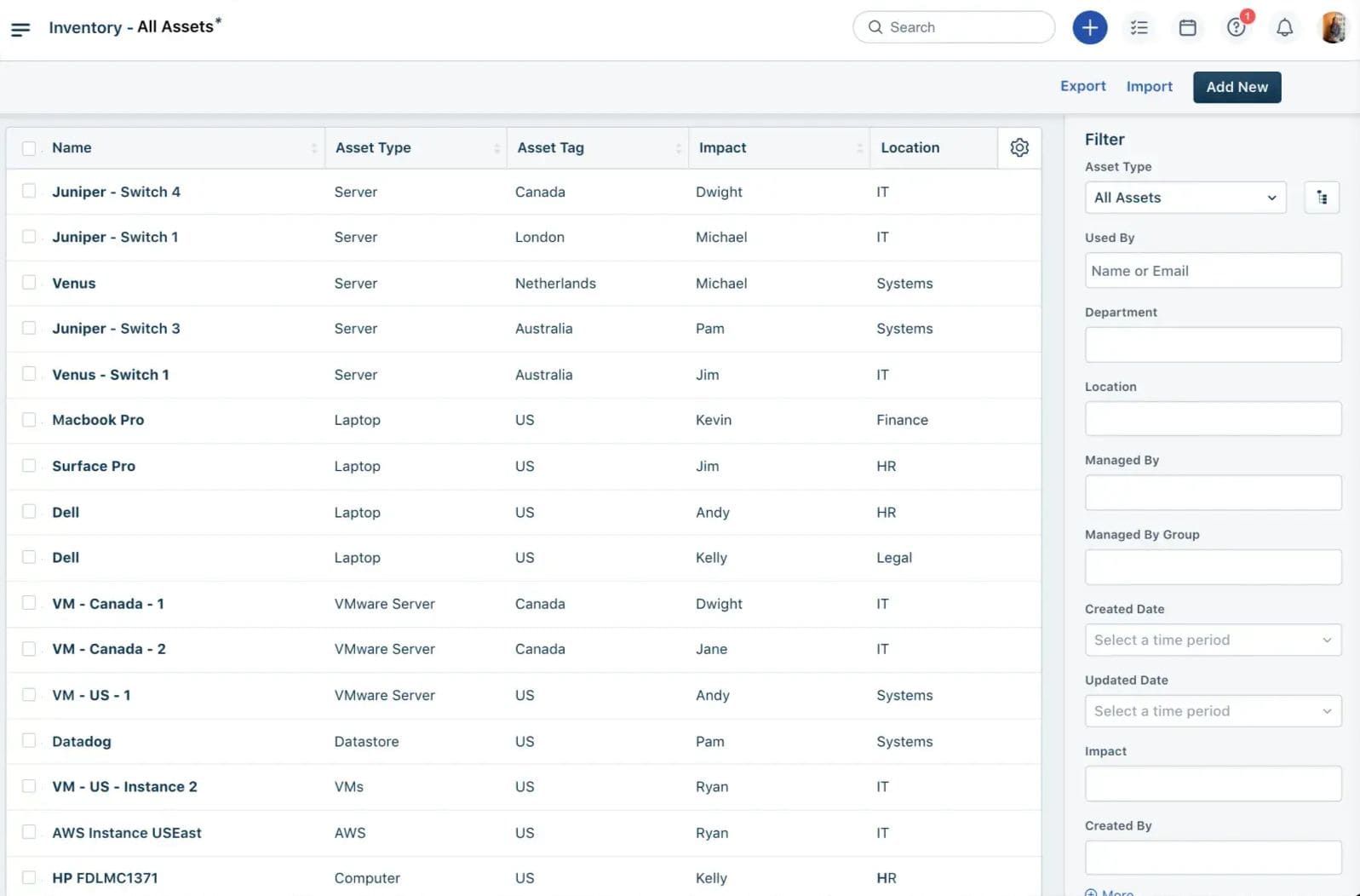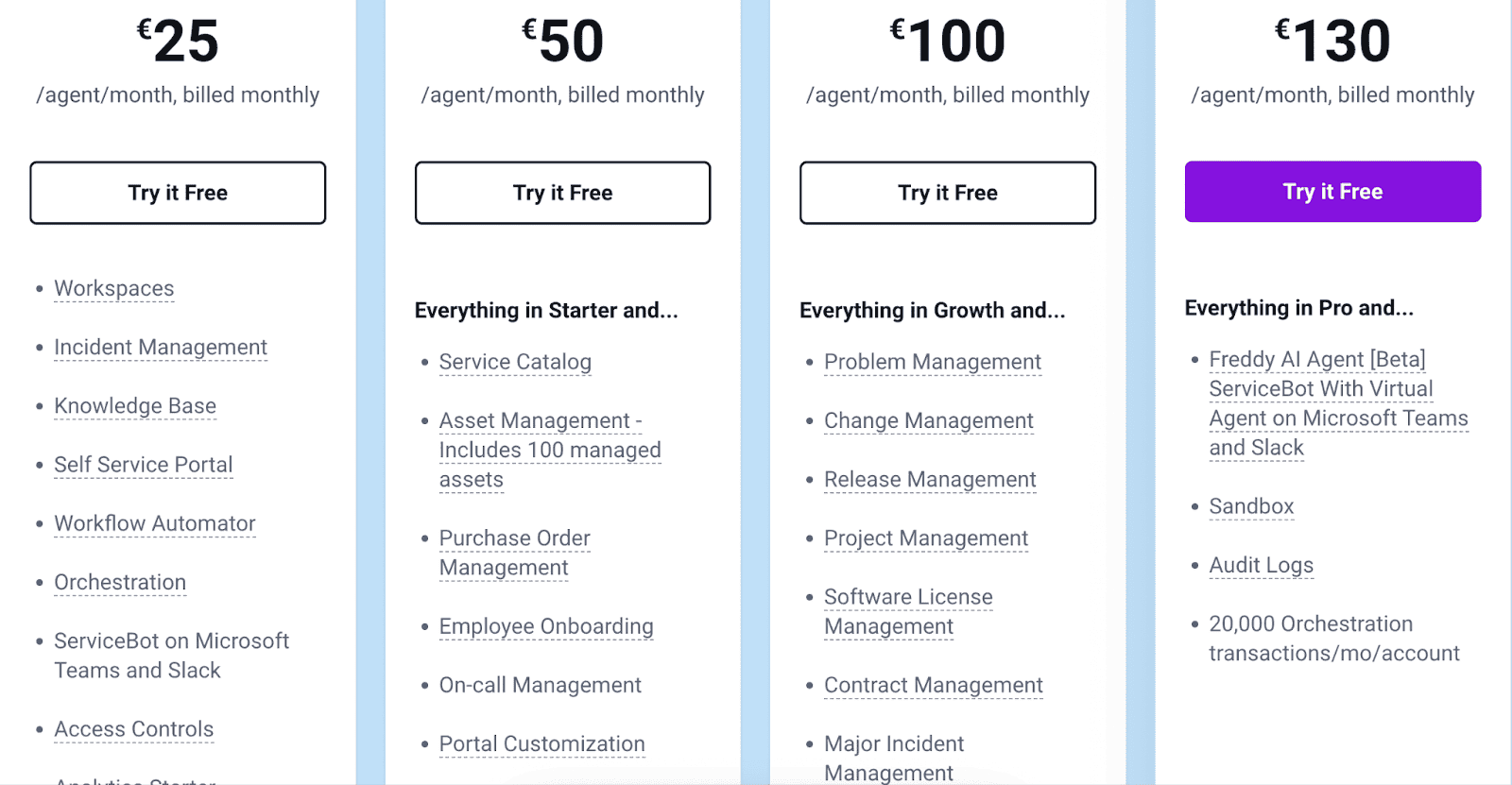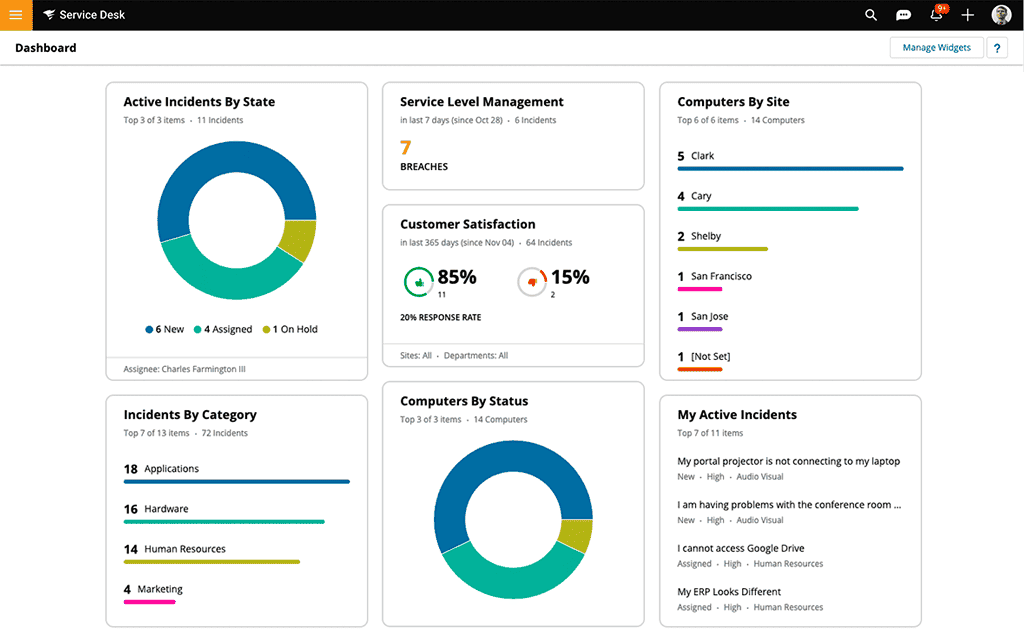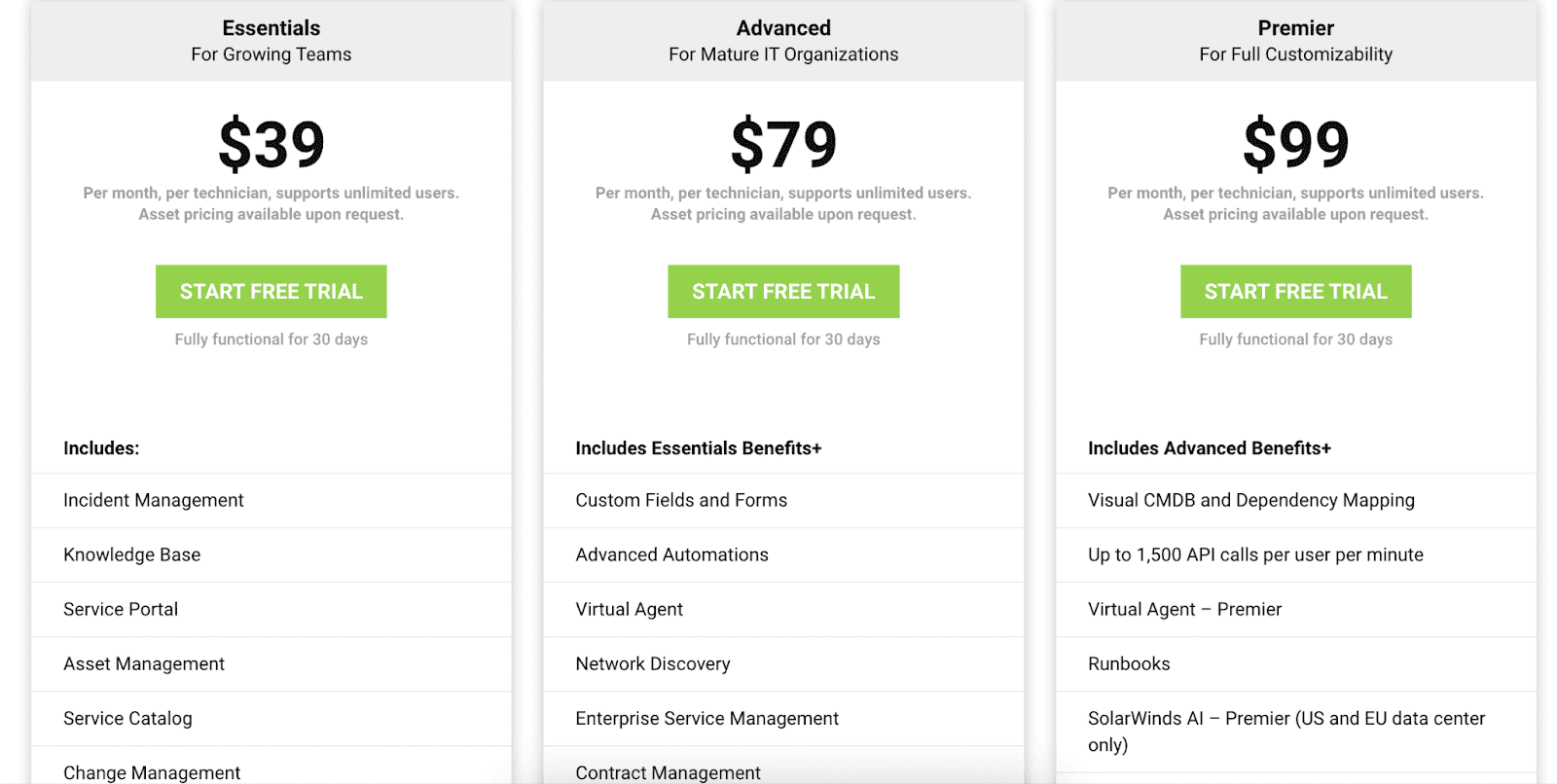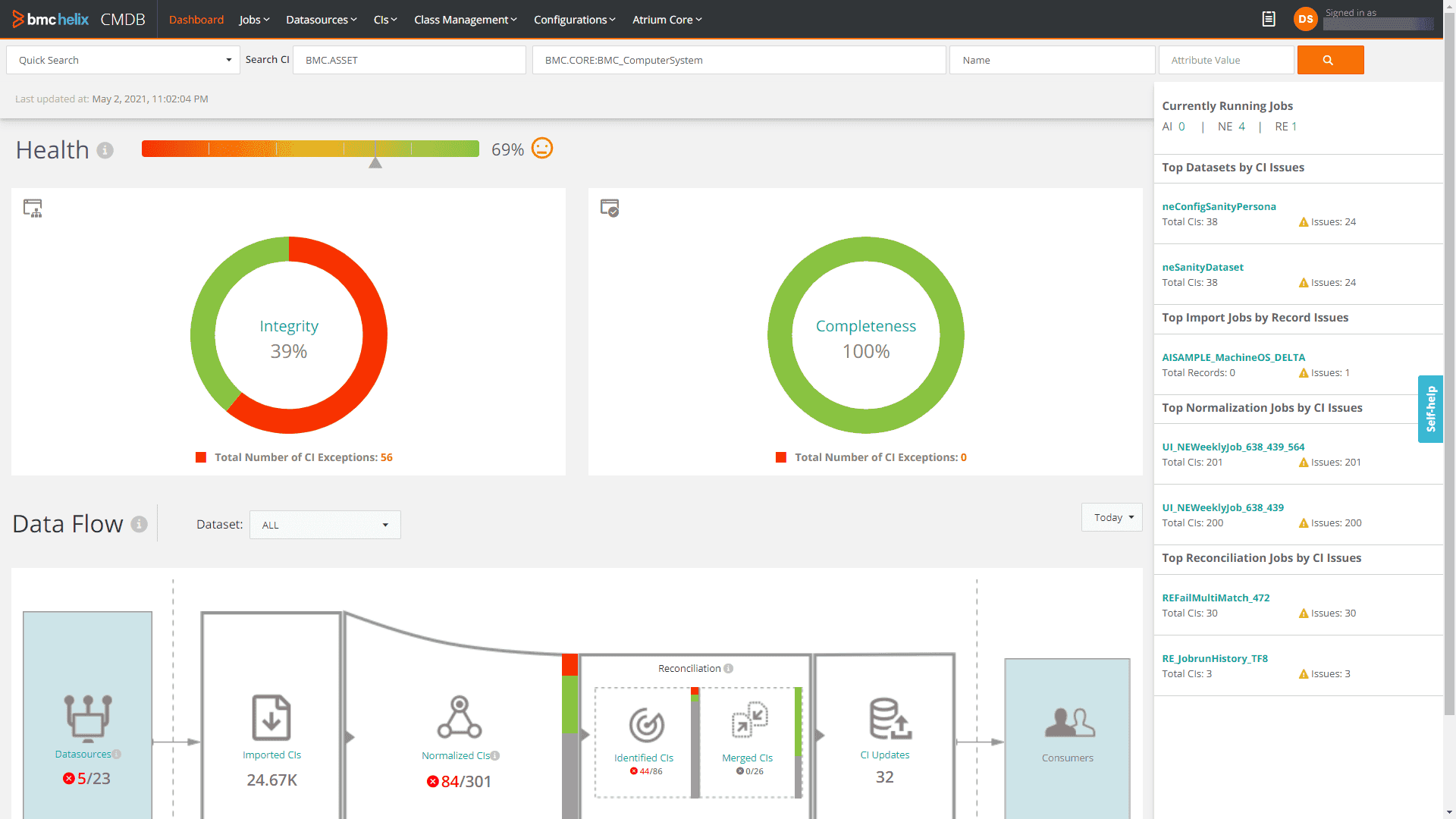Choosing configuration management software isn’t about shiny dashboards. It’s about fit, cost, and proof it won’t crumble at scale. The problem? Every vendor “does everything,” pricing hides behind “talk to sales,” and trials cap what you actually need to test.
Here’s the real checklist: platforms supported, hybrid coverage, agent vs. agentless, RBAC, audit trails, API depth, ecosystem, and how pricing scales—per node, per user, per GB, or all three. Add migration effort, training time, support SLAs, and contract lock-ins. Now multiply by five vendors and three demo calls each.
That’s weeks of decision drag.
This guide cuts the noise. We compared 15 leading configuration management systems on the metrics that matter: feature depth, deployment models, total cost of ownership, and real-world trade-offs. You’ll see where tools excel, where they stall, and what’s likely to break in production. No fluff. Clear scoring.
How we tested solutions from this list
We kept it simple—and surgical. First, we mapped every feature across software configuration management contenders: platforms, policy models, RBAC, APIs, reporting. Then we ran hands-on trials, pushing free tiers with real-world workloads and failure cases.
Demo calls weren’t fluff; we pressed on pricing models, scale limits, and support SLAs.
To balance vendor claims, we analyzed user feedback from G2/Capterra, tagging patterns by use case and company size. Finally, we scored tools with a weighted matrix: capability, time-to-value, TCO, and risk.
9 Criteria to choose the best configuration management tools
Picking the right configuration management software isn’t just another task on your to-do list. It’s the key to keeping your infrastructure running smoothly. The wrong choice? It’ll leave you dealing with misconfigurations, downtime, and a team stuck in endless firefighting mode. But the right one? It’s your ticket to efficiency, security, and sanity.
Here’s what to look for in the best enterprise configuration management tools — and why it matters:
- Automation & policy enforcement. Golden baselines, patching, and config drift auto-remediation. Your SACM stays accurate because the tool enforces policy — not humans.
- Scale that matches your estate. From a few hundred nodes to global hybrid. Parallel execution, smart targeting, and low agent overhead so changes land fast — without windows slipping.
- Coverage across your stack. Clouds (AWS/Azure/GCP), Kubernetes, Windows/Linux/network gear, and legacy. Environment configuration management tools must normalize configs into one model.
- Version control & safe change. Git-backed states, diffs, rollbacks, and approvals mapped to ITIL Change. Auditors see who changed what, when, and why—no archaeology.
- Security & compliance built in. RBAC, SSO, encryption, least privilege, and immutable audit trails. Map evidence to SOC 2, ISO 27001, HIPAA — right from the platform.
- Data model & CI relationships. A CMDB-aware engine that records owners, dependencies, and business services. Impact analysis before you push; clean CI relationships after.
- Drift, health, and reporting
Live dashboards, drift/compliance reports, SLA alerts, and exportable evidence. Prep for audits in minutes, not sprints. - Integrations that fit workflows. APIs/webhooks plus CI/CD, ITSM, IdM, and SIEM connectors. Your configuration management software should slot into tickets, pipelines, and reviews.
- Pricing clarity & TCO. Know the metric (per node/agent/user/GB), infra costs, and admin time. The best enterprise configuration management tools cut toil and pay back quickly.
The best configuration management software does more than manage configurations. It transforms how you handle infrastructure. It ensures consistency, improves security, and saves time, so your team can focus on what matters most.
Ready to level up your infrastructure management? Let’s find the perfect tool 👇
Cloudaware configuration management database
Capterra rating: 4,5/5
Best for: regulated enterprises and fast-scaling SaaS running hybrid/multi-cloud that need CMDB-backed configuration, compliance, and FinOps in one place.
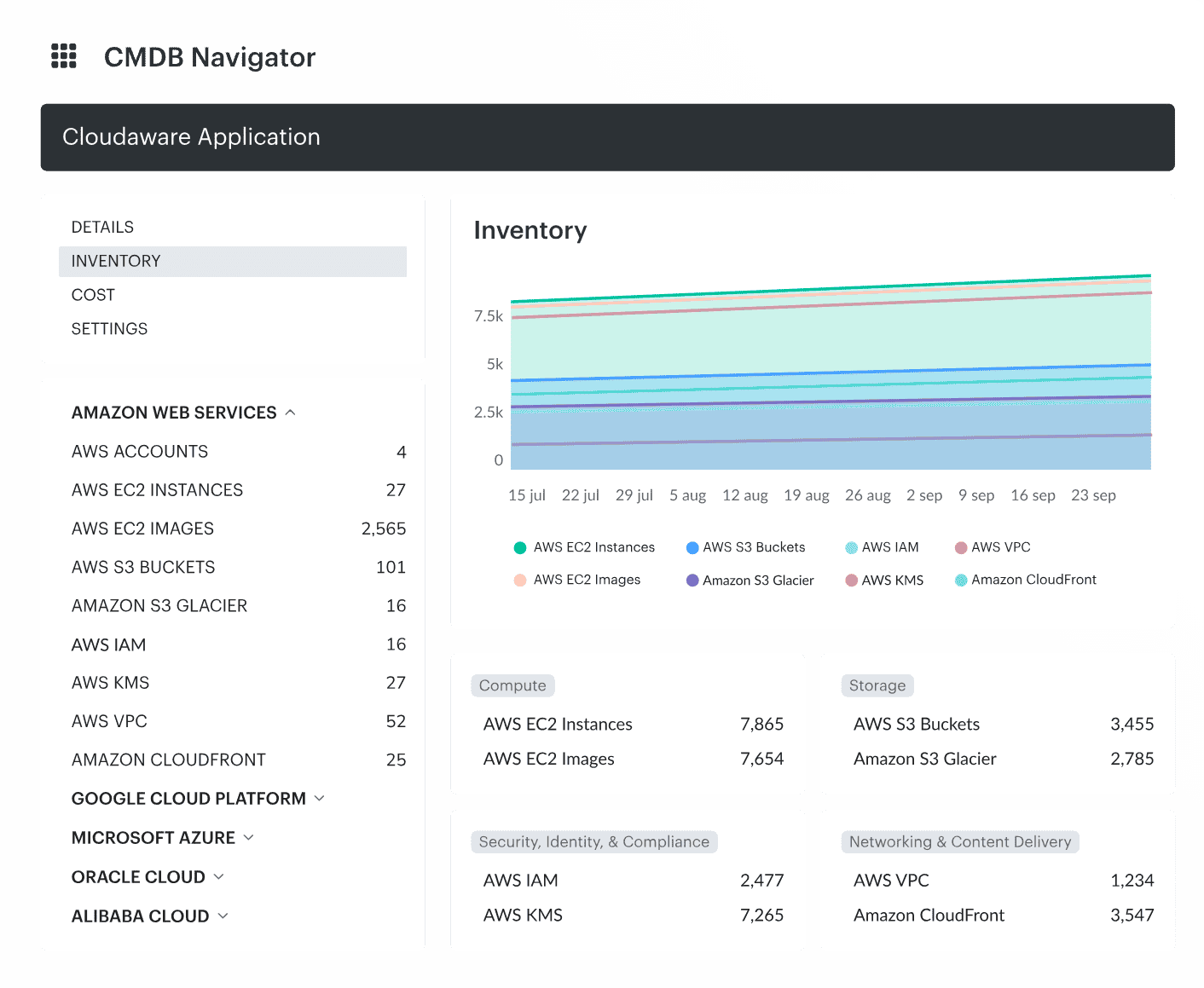
Cloudaware is a game-changing configuration management tool. It's designed for the chaos of multi-cloud and hybrid environments. It’s not just about tracking your data — it’s your single source of truth for all configuration items (CIs).
What makes it stand out? Visibility. It spans AWS, Azure, Google Cloud, Oracle, and even Alibaba, while seamlessly connecting to your on-prem systems. Old-school configuration management solutions? They can’t touch this level of integration.
But it gets better. Cloudaware doesn’t just catalog your CIs — it enriches them. It pulls in key details like costs, vulnerabilities, CPU usage, and patch status. It organizes everything with smart tags. It also establishes meaningful relationships across the data. You’ll instantly know which cloud, app, or department owns a CI.
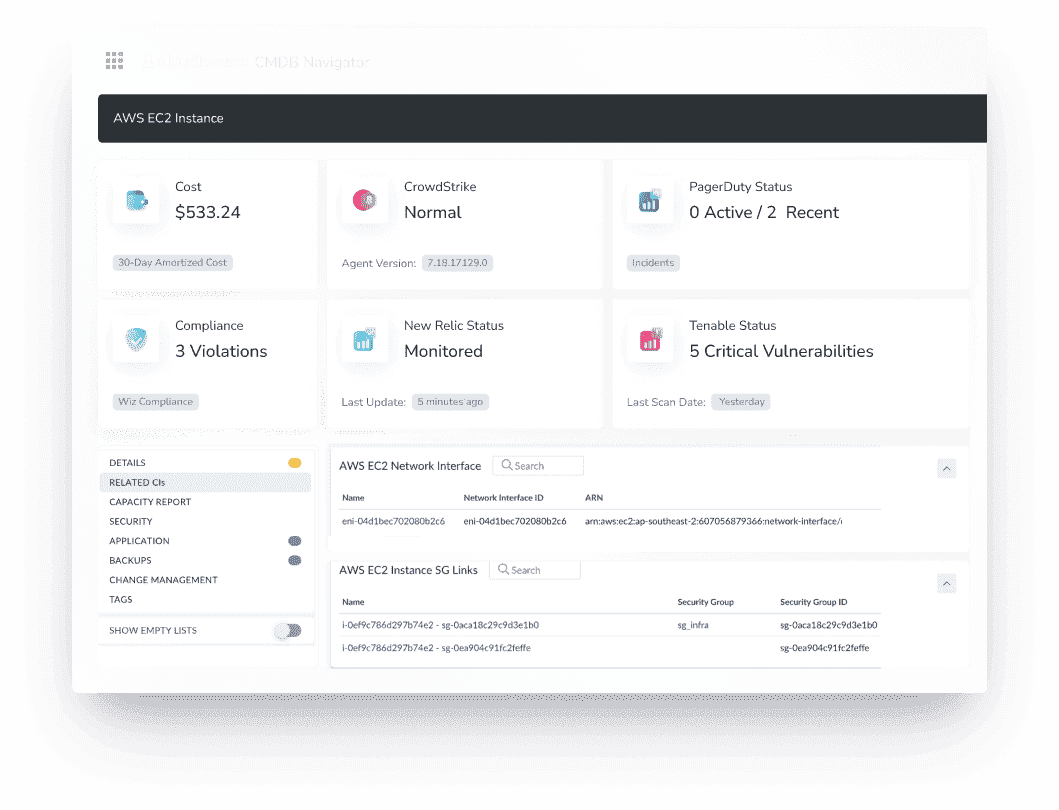
Imagine managing an EC2 instance:
- Cloud Platform: AWS
- Account: ProductionAccount123
- Cost: $533/month
- Tags: Environment: Production, Department: Marketing, Application: CRM
- Application: Linked to “CRM Production”
- Vulnerabilities: Outdated patches, exposed ports, weak encryption
Features
Cloudaware makes it easy to:
- Navigate and search through hundreds of CIs in seconds.
- Organize your data with smart tag management across environments.
- Set up approval workflows, ensuring all changes are vetted.
- Dive into analytics with visual dashboards and reports, turning raw data into insights.
- Track configurations and enforce change management for consistency.
- Integrate seamlessly with your other tools via ready-made APIs.
It also offers powerful modules for FinOps, Vulnerability Management, CSPM. Additional features include SIEM, IT Compliance, and Intrusion Detection modules.
Pricing
As for pricing, Cloudaware’s model starts at 50 servers and 1 user. For example, managing 100 servers will cost around $400/month. And if you’re curious about your specific needs, there’s an easy-to-use pricing calculator on the website.
Want to give it a spin? Cloudaware offers a 30-day free trial to see how it works for your environment.
Pros
- Broad Resource Coverage. CloudAware stands out by supporting more resource types than most competitors. This makes it ideal for complex IT ecosystems.
- Multi-Cloud Mastery. Seamlessly manage assets across various cloud platforms without losing control or efficiency.
- Unified Hybrid Management. Integrate data from both cloud and on-prem systems into one cohesive view for smoother operations.
- More Than Just Discovery. Enhance your CIs with valuable third-party data. This includes information on billing, security, vulnerabilities, compliance, and change management.
Cons
Learning Curve. The interface may initially overwhelm new users. CloudAware provides a personalized assistant to guide you through the setup. It tailors the solution to your specific needs.
Looking for a smart, connected, and detailed CMDB that can handle the complexities of hybrid infrastructure? Cloudaware is one of the best IT configuration management services available.
ServiceNow
G2 rating: 4,4/5
Best for: large enterprises with mature ITSM processes that need a deeply customizable, ITIL-aligned CMDB tightly integrated with ServiceNow workflows, governance, and broad third-party apps.
ServiceNow is a powerful configuration management tool. It helps companies manage IT systems, track assets, and improve configurations. Its platform simplifies configuration mapping and dependency management, ensuring your operations run smoothly.
Widely used by global enterprises, ServiceNow serves tech giants and healthcare providers alike. Its strength lies in scalability, integration, and advanced automation features.. Plus, it’s built with security in mind, offering encryption and role-based access to protect your data.
This CMDB is ideal for businesses with hybrid cloud environments and multiple accounts. It offers the flexibility to grow alongside your infrastructure.
Configuration management tool features
- Automated Discovery. Instantly discover assets and configurations with this configuration management software tool.
- Dependency Mapping. Visualize relationships between configurations and services. This helps you track your system’s health.
- Incident & Change Management. Seamlessly integrate with ITSM processes for smooth operations.
- Cloud & On-Prem Support. Works across both cloud and on-prem systems — perfect for hybrid setups.
- Real-Time Data. Get up-to-date, accurate configuration information.
- Customizable Dashboards. Build views that fit your team’s needs and streamline your workflow.
- Security. Includes encryption and compliance features for robust data protection.
Pricing
ServiceNow follows a subscription-based pricing model. Costs vary depending on company size and the number of configurations managed. Basic packages typically start around $10,000 annually. For example, a mid-sized company managing 1,000 assets could expect to pay between $20,000 and $30,000 per year for ServiceNow’s CMDB solution.
While it’s not free, ServiceNow offers a 30-day trial, allowing you to test its features before committing to a subscription.
Pros
- Packed with Features. A solid track record in handling massive IT environments with ease.
- Seamless Integrations. Plays nicely with ITSM platforms and cloud solutions across the board.
Cons
- Resource Limitations. Lags behind modern CMDB tools in supporting a wide range of resource types.
- Outdated Vibes. Feels less flexible for fast-moving, cloud-first organizations.
- Steep Learning Curve. Can be a bit of a brain teaser for smaller teams or businesses aiming for simplicity.
ServiceNow is a top-tier choice for businesses with growing IT needs. It scales with your organization, making it a popular option for large enterprises.
Read also: Find the Best Hybrid Multi-Cloud CMDB: Cloudaware CMDB vs. ServiceNow
Device42
G2 rating: 4,7/5
Best for: hybrid and data-center-heavy orgs that need agentless discovery, rack/IPAM visibility, and application dependency mapping to populate or replace a CMDB.
Device42 is a robust system configuration management tool. It is designed for enterprises managing hybrid environments. Device42 serves as your comprehensive guide. It supports managing AWS, Azure, and on-premises resources. It tracks hardware, software, and dependencies, weaving them into a single, unified view.
Device42 is the go-to choice for enterprise Data Center Managers and IT Operations teams. It's ideal for tackling multi-cloud infrastructures with thousands of accounts and servers.
The result? Complete visibility that empowers smarter, faster decisions.
Configuration management tool features
Here’s what makes Device42 one of the top system configuration management tools for enterprises:
- Automated Asset Discovery. Device42 scans your entire IT environment, including AWS and Azure. It creates an up-to-date inventory of your assets.
- Hybrid Infrastructure Mapping. Tracks physical servers, virtual machines, and cloud resources like AWS and Azure, giving you a full view of your hybrid setup.
- Application Dependency Mapping. Understand how your applications connect and rely on each other. This ensures nothing critical breaks during changes or migrations.
- License and Compliance Management. Stay on top of licenses, usage, and audits with powerful tracking features.
- Advanced Security Configuration Management Tools. Detect misconfigurations, vulnerabilities, and compliance risks in real-time to strengthen your security posture.
- API Integrations. Sync seamlessly with tools like ServiceNow, Jira, and Splunk for smoother workflows.
- Change Management Tracking. Monitor changes across your environment to reduce the risk of downtime and errors.
- Intuitive Dashboards. Visualize performance, capacity, and risks with dynamic, easy-to-read reports.
Pricing
Device42 keeps it simple and flexible. Pricing depends on how many devices and assets you manage.
Starting cost? About $3,500 per year. Perfect for small teams looking to cover the basics.
For mid-sized setups? Managing 500 devices might cost you $5,000 to $8,000 annually. This includes advanced features like asset visualization and automation.
Not ready to commit? No problem. As one of the best configuration management tools, Device42 offers a free 30-day trial. You can kick the tires, test the features, and see if it’s the right fit — no strings attached.
Pros
- User-Friendly Interface. Many users find Device42 very easy to use, enhancing their workflow efficiency.
- Exceptional Customer Support. Users consistently praise the responsive and helpful support team.
- Comprehensive Asset Management. Device42 effectively tracks a wide range of devices and rooms, simplifying IT management.
- Remote Accessibility. The platform is accessible from anywhere. It allows for convenient updates to internal information and databases.
Cons
- Complex Task Execution. Some users note that certain tasks require multiple steps, which can be time-consuming.
- Limited Backup Options. Backup functionalities are somewhat restricted to pre-configured settings, limiting customization.
- Lack of Command Line Access. The absence of command prompt access on the main system or remote collectors is a drawback for some users.
Read also: Find the Best Hybrid Multi-Cloud CMDB: Cloudaware vs. Device42
Asset Panda
G2 rating: 3,9/5
Best for: SMBs and mid-market teams that need mobile-first asset tracking (barcodes, custom fields, workflows) across non-IT equipment, facilities, and field operations.
Asset Panda is more than an asset tracker. It’s a top configuration management tool for businesses. It’s ideal for managing on-premises and cloud infrastructure.
Asset Panda caters to enterprises of all shapes and sizes. From IT managers to finance leads, it’s a favorite for anyone tasked with taming sprawling infrastructures.
Who uses it:
- IT Teams: Optimize asset performance, track updates, and simplify configuration management.
- Compliance Experts: Use it to nail audits and keep licenses in check.
- Budget Watchers: Monitor asset costs and depreciation for smarter financial decisions.
For organizations comparing software configuration management tools, Asset Panda stands out. Its ease of use and robust feature set make it a top choice.
Features
Here’s how Asset Panda stacks up against other software configuration management tools:
- Customizable Asset Management. Track anything — servers, software, or even office chairs. Fully customizable fields let you tailor it to your unique needs.
- Cloud and Mobile-First Design. Access your data anytime, anywhere. Whether you’re reviewing assets in the office or troubleshooting from the field, Asset Panda makes it easy.
- Detailed Configuration Tracking. Manage hardware specs, license keys, and warranties — all centralized for easy access.
- Barcode Scanning. Update inventory on the go with barcode scanning. It’s fast, efficient, and cuts down on errors.
- Robust Reporting. Generate insights on asset usage, costs, and performance. Your next budget meeting just got a lot easier.
- Seamless Integrations. Sync with ITSM tools like ServiceNow or Jira to simplify workflows and boost efficiency.
- Asset Lifecycle Management. From purchase to retirement, track every stage of your assets’ lives. No asset left behind!
- Team Collaboration Tools. Manage multi-user access, set permissions, and keep everyone aligned.
Pricing
Asset Panda uses a subscription-based pricing model. This makes it accessible for businesses of all sizes.
- Starting cost? As low as $1,500 per year, ideal for smaller teams.
- For a medium-sized company? Managing 500 assets might set you back around $4,000 annually.
Not sure if it’s the right fit? No worries — Asset Panda offers a 14-day free trial so you can explore the features before making a commitment.
It’s an affordable and flexible tool for configuration and change management. Perfect for growing businesses seeking simplicity without sacrificing functionality.
Pros
- Many users on Capterra appreciate how easy and intuitive the interface is, even for beginners. It makes asset management less of a chore.
- Asset Panda is highly customizable, which allows users to adjust the system to fit their unique business needs.
- The mobile app is a huge plus. It lets teams manage assets on the go, improving efficiency for fieldwork.
- Users value the reporting features that generate detailed insights into asset usage. These insights support better decision-making and budgeting.
- Excellent customer service provides fast response times and helpful solutions to problems.
Cons
- Some users have reported issues with the Android app. Barcode scanning, in particular, doesn’t always function properly.
- Occasional technical glitches have been reported. This is especially true with data syncing and tracking certain assets. These issues sometimes take time to resolve.
- The tool is generally user-friendly, but some users find the initial setup and customization tricky. It requires patience to get everything configured correctly.
- Users note that while Asset Panda is powerful, its integrations could be more expansive. This is particularly important for organizations using multiple platforms.
Read also: Cloudaware CMDB vs. Asset Panda: Which Solution Fits Your Needs?
Deepser
Capterra rating: 4,6/5
Best for: SMBs and mid-market IT teams that want a modular ITSM with built-in CMDB and asset management—quick to onboard, easy to customize, and sensibly priced.

Source: Deepser
Deepser is an IT service management platform. It provides fully integrated cloud configuration management tools. It helps businesses maintain control over IT configurations. It reduces risks and ensures smooth operations in a fast-paced, evolving environment.
This configuration management tool integrates seamlessly with incident and change management processes. It simplifies handling and monitoring diverse infrastructures.
Deepser is designed to optimize efficiency and visibility for IT operations. It supports managing both on-premises and hybrid systems.
Who Uses It and Why?
- Enterprises and IT teams rely on Deepser to manage hybrid IT infrastructure. It provides an effective solution for tracking configurations.
- IT Operations Teams. Keep an eye on all infrastructure configurations, ensuring everything is aligned and operational.
- Service Management Teams. Use Deepser’s integrated tools to efficiently manage incidents, changes, and problems.
- Compliance Teams. Track configuration data to ensure compliance with industry regulations and standards.
Deepser tools for configuration management
- Configuration Item (CI) Management. Efficiently manage CIs such as servers, applications, and network devices, ensuring you have a clear view of your IT landscape.
- Built-in change management tools minimize disruptions. They help track changes for better control and accountability.
- Deepser integrates incident and problem management with the CMDB. This enables quick and proactive troubleshooting and issue resolution.
- Customizable dashboards and real-time reporting provide clear insights. They cover asset health, incidents, changes, and overall IT performance.
- Deepser integrates with other ITSM tools, ensuring data synchronization across platforms. This simplifies management.
- Automated workflows reduce manual effort and increase efficiency. They help you stay on top of configuration changes and incidents.
- The intuitive interface makes it easy for teams to get started. It reduces onboarding time and boosts productivity.
Pricing
Deepser has three flexible pricing options to fit different needs:
- Starter: $36 per agent/month (billed annually)
- Plus: $45 per agent/month (billed annually)
- Enterprise: Custom pricing based on the number of agents and specific business requirements
For example, a mid-sized company with 20 agents would pay $900 monthly for the Plus plan.
Deepser also offers a free demo and special discounts for larger teams. If you're unsure, you can try the platform risk-free with a 14-day trial to explore how it aligns with your needs before committing.
Read also: What Is Configuration Management? Definition. Processes. Recommendations
Pros
- Deepser offers a well-rounded set of features. It blends configuration management with incident and change management. It's a one-stop solution for teams managing complex IT environments.
- The platform’s intuitive interface makes it easy for users to navigate. It allows quick setup, even for those new to configuration management systems.
- Deepser stands out with its ability to be customized according to different business needs.
- Deepser offers competitive pricing compared to other configuration management tools. This makes it accessible to organizations of all sizes.
Cons
- While the interface is user-friendly, some of the more advanced features may take a while to fully grasp.
- Some users on Capterra find the reporting capabilities a bit lacking. While the tool offers essential reporting features, there is room for improvement. This is especially true for those needing more complex or customizable reports.
- Deepser may not offer the full flexibility that open-source configuration management tools provide. For teams looking for a fully customizable, open-source solution, Deepser might not be the best fit.
- A few users have reported bugs, particularly with syncing data or certain integrations. While Deepser is generally stable, these bugs can disrupt workflows when they occur.
FreshService
Capterra rating: 4,5/5
Best for: SMB and mid-market IT teams that want quick-to-deploy ITSM with a lightweight CMDB, automated discovery, strong integrations, and low admin overhead.
FreshService is a cloud-based ITSM platform. It combines configuration management, incident, problem, and change management. Designed for flexibility and ease of use. Perfect for businesses of all sizes. It integrates IT operations with service management seamlessly.
Whether you're a startup or an enterprise, it's adaptable. It’s a configuration management tool that brings clarity and structure to IT management.
Who Uses It and Why?
- IT Operations Teams. Centralize assets and configurations. Keep an eye on everything from one place.
- Service Desk Teams. Manage incidents and changes. Resolve issues faster, reduce downtime.
- Compliance Teams. Track configuration changes. Maintain compliance in cloud and hybrid environments.
- Project Managers. Coordinate resources. Align service-related tasks with business goals.
Features
- FreshService’s CMDB integrates with other ITSM tools. One platform to manage everything.
- Automatically discover and update assets. No manual data entry needed.
- Track configuration items and their dependencies. See how everything is connected.
- Handle issues and changes in real-time. Keep configurations intact.
- Tailor dashboards to suit your needs. Real-time data at your fingertips.
- Works across both cloud and on-prem. Adaptable for complex infrastructures.
- Intuitive interface for easy navigation. Fast onboarding, no steep learning curve.
- Detailed reports on asset performance. Make data-driven decisions with ease.
- Flexible integrations with third-party tools seamlessly.
FreshService is a solid choice for configuration management tools. It helps manage both cloud and on-prem infrastructures. Teams will appreciate its simplicity and robust features. If you're looking for the best configuration management tools, FreshService should be on your radar.
Read also: Decoding configuration management vs change management in a multi-cloud environment
Pricing
FreshService provides flexible pricing options based on your team’s needs:
- Starter: €25 per agent/month (monthly billing)
- Growth: €50 per agent/month (monthly billing)
- Pro: €100 per agent/month (monthly billing)
- Enterprise: €130 per agent/month (monthly billing)
For instance, a team of 20 agents on the Growth plan would cost €1,000 each month. They also offer a 21-day free trial so you can explore the platform before committing to a subscription.
Pros
- Easy to navigate and use, even for non-technical teams.
- Includes ticket management, asset tracking, and workflow automation.
- New features roll out regularly, adding flexibility.
- Quick and helpful responses from the support team.
- Built-in reporting can be confusing and doesn’t always yield desired results.
Cons
- Some users on Capterra find advanced customization options lacking.
- Some teams reported issues with integration.
FreshService gives teams the visibility they need. It lets them respond quickly. It’s all about streamlining operations. When you need control, it’s the tool that delivers.
Looking for best configuration management tools? FreshService is hard to beat.
Solarwind
G2 rating: 4,5/5
Best for: mid-market, Windows-heavy and on-prem shops that need strong network/config management (NCM), discovery, and performance monitoring in one ecosystem.
SolarWinds is one of the top configuration management tools for enterprises with evolving needs. Designed for enterprise-level IT teams, it’s built to simplify the chaos of managing hybrid infrastructures. SolarWinds excels in delivering clarity and control. It works well for managing multiple clouds or a mix of on-prem and virtual servers.
It’s a configuration management tool. It combines asset tracking, network management, and monitoring. Think of it as your infrastructure’s brain — keeping everything connected, optimized, and secure.
Who’s Using SolarWinds (and Why)?
Enterprise IT teams. Managed service providers. Government organizations.
Companies with massive infrastructures rely on SolarWinds for:
- Network performance monitoring
- Asset and server tracking
- Configuration backup and restoration
It’s the go-to tool for teams needing visibility and efficiency at scale. If your IT landscape feels like a “choose your own adventure” novel with no clear path, SolarWinds helps you map it all out.
Features
Here’s what makes SolarWinds stand out among configuration management tools. It also excels as an automated configuration management tool:
- Automated Configuration Backup. SolarWinds automatically backs up your network and server configurations. This ensures you're always prepared for the unexpected.
- Real-Time Change Detection. SolarWinds tracks every tweak, update, and modification, keeping you informed in real time.
- Hybrid Infrastructure Support. From cloud deployments to on-prem servers, SolarWinds integrates seamlessly. No matter where your assets live, they’re always under your watchful eye.
- Detailed reports that make audits a breeze and decision-making smarter.
- Network Configuration Management.
- Risk Assessment Tools. SolarWinds identifies vulnerabilities and compliance gaps before they become major issues. Think of it as your infrastructure’s security advisor.
Pricing
SolarWinds CMDB offers a 30-day free trial. This allows businesses to explore its features before committing. Pricing starts at approximately €25 per user/month, but the final cost depends on the number of agents and the specific features you need.
This flexible pricing model allows companies to scale their usage as they grow. It ensures they only pay for what they need, keeping costs manageable.
Pros
- Automated backups. SolarWinds ensures your settings are securely stored and easy to restore.
- Real-time updates.
- Even with powerful features, the platform remains intuitive and accessible.
- Grows with your business, from hundreds to thousands of servers.
- Works seamlessly with other IT tools to streamline workflows.
Cons
- Some users find advanced features challenging without proper training.
- Occasionally, support materials fall short for complex configurations.
- While pricing is flexible, larger enterprises may find costs stacking up with additional agents.
- Certain tools, like dashboards, could benefit from modernization to meet current expectations.
These features make SolarWinds a strong contender. It ranks among the best software configuration management tools. It is especially suitable for hybrid and multi-cloud setups.
BMC Helix
Capterra rating: 4,1/5
Best for: global enterprises with complex environments that need ITIL-aligned ITSM, robust CMDB + Discovery, AIOps, and automation across hybrid/multi-cloud—with deep customization and governance.
It’s a next-gen configuration management solution. It integrates IT service management (ITSM) with advanced AI capabilities. Think of it as the Sherlock Holmes of IT: analyzing, diagnosing, and optimizing your configurations with precision.
Who’s Using BMC Helix cm tools (and Why)?
Enterprise IT teams, service providers, organizations managing hybrid environments choose BMC Helix to:
- Reduce downtime and improve performance.
- Track assets, configurations, and dependencies seamlessly.
- Stay ahead of audits and regulatory requirements.
- Streamline repetitive tasks to save time.
It’s ideal for companies needing a reliable tool to manage thousands of accounts, servers, and applications. It helps maintain control.
Features
BMC Helix cm tool stands out among configuration management systems for these reasons:
- Hybrid Infrastructure Support. BMC Helix thrives in multi-cloud and on-prem environments. It integrates seamlessly, no matter where your assets live.
- Automated Configuration Management. Why waste time on manual updates? Helix automates configuration tracking and changes, so you can focus on strategic goals.
- AI-Driven Insights. BMC Helix leverages AI to identify patterns, detect anomalies, and predict issues before they escalate.
- Dependency Mapping. Understand how assets and applications interact. It’s like seeing the wiring behind your IT universe in HD.
- Change Impact Analysis. Worried about unintended consequences? Helix analyzes potential impacts before changes go live, minimizing risks.
- Compliance and Audit Reporting. Generate detailed reports to meet regulatory requirements. No stress, no scrambling during audits.
- Customizable Dashboards. Get insights tailored to your needs. Helix’s dashboards are designed to show the most relevant data in a clean, actionable way.
- Integration with ITSM Tools. BMC Helix works seamlessly with other IT service management tools. It ensures consistent workflows and data accuracy.
Pricing
BMC Helix configuration management tool offers flexible pricing tailored to your business needs. The starting point is approximately €50 per user per month, with costs scaling up based on the size of your deployment. Larger enterprises can expect higher pricing. This is due to additional features and users needed to accommodate their requirements.
A free trial is available, giving businesses the chance to test the software before making a commitment. For companies managing complex, multi-cloud environments, BMC Helix stands out. It is a scalable and adaptable CMDB solution.
Pros
- Users its robust synchronization with BMC's IT Service Management suite. This facilitates efficient reconciliation and streamlined workflows.
- The platform's open technology allows easy customization. This enables organizations to tailor the system to their specific needs.
Cons
- Some users on Capterra find the layout for CIs convoluted. It is challenging to obtain a clear picture of relationships and dependencies.
- While customization is a strength, there are inherent risks. For example, the possibility of disrupting existing workflows or encountering issues during upgrades.
- Certain aspects of the system may require performance improvements to enhance overall efficiency.
Ivanti Neurons
G2 rating: 3,9/5
Best for: mid-to-large enterprises (often regulated) with distributed endpoints that want ITIL-aligned ITSM, CMDB-integrated automation, and strong governance across Windows/macOS/mobile.
image
Ivanti Neurons sits at the intersection of ITSM, CMDB, and endpoint automation—useful when you want configuration tied to incidents, changes, and real ownership, not just another inventory. For ITSM/CMDB teams, the value is clear: normalized CIs, workflows that respect ITIL, and automation that reduces drift and audit pain. Think configuration management services wrapped in service management context—one place to see, change, and prove.
Features you’ll actually use
- CMDB forms, linked records, dashboards, and tiered alerts for CI health and relationships.
- Workflow for CI lifecycle; change automation; installed software/services views; reporting.
- RBAC and audit trails within ITSM process flows.
These are documented capabilities, not marketing gloss.
Pricing
image
Ivanti Neurons is modular and quote-based; costs typically scale by module and by unit (per device, per end-user, or per technician). Public reseller listings show concrete ranges for some modules—for example, Neurons for Facilities at ~$46 per end-user/year and Neurons for MDM between ~$51–$95 per device/year (standard vs. premium). ITSM/CMDB tiers are sold via sales quotes.
Official pages emphasize live demos; free-trial terms aren’t published centrally. Independent reviews frequently cite 30–45-day trials for Ivanti Neurons, while Ivanti’s site offers “book a live demo.” Treat trials as negotiable during procurement.
ManageEngine ServiceDesk Plus (CMDB)
Capterra rating: 4,4/5
Best for: SMBs and mid-market IT teams that want an ITIL-aligned service desk with a built-in CMDB, affordable per-technician pricing, and quick onboarding (cloud or on-prem).
image
ServiceDesk Plus brings CMDB into your service desk so changes, incidents, and ownership live in one place. The value: clean CI records, relationship maps, and workflows that cut drift and speed root-cause. It’s practical for teams standardizing processes without hiring an admin army — configuration management software tools that ship inside ITSM.
Features
- Visual CI relationships and impact analysis.
- CI lifecycle tied to change/problem records and approvals.
- Discovery integrations (Layer 2, apps/dependencies) to auto-populate the CMDB.
- RBAC, audit history, and reporting built into service workflows—classic it configuration management tools needs.
Pricing
The platform cost depends on tech seats, modules, and asset counts—plan your environment configuration management tools budget accordingly.
Pricing scales by edition and “per technician/month.” Public list starts at $13 (Standard), $27 (Professional), and $67 (Enterprise). CMDB is available in higher tiers/add-ons; third-party breakdowns list a CMDB add-on around $1,595/year for Professional.
Cloud/on-prem both offer a 30-day free trial.
Matrix42 (Service Management + CMDB)
G2 rating: 4,3/5
Best for:
image
Matrix42 pairs a European-built ITSM with a CMDB and FireScope discovery/mapping. The value for ITSM/CMDB teams: clean CI relationships, impact analysis, and automated discovery that keeps services current — so change, incident, and asset data tell the same story. 30-day cloud trial makes it easy to validate in your stack.
If you need ITSM, discovery, and CMDB under one roof—with Azure, identity, and dependency mapping built in — Matrix42 is a pragmatic, enterprise-ready option to shortlist.
Features you’ll actually use
- CMDB with relationships/impact views embedded in ITSM.
- FireScope SDDM for automated discovery, dependency/topology mapping, and ongoing change detection.
- Azure discovery and Entra ID (Azure AD) integrations for identities and cloud VMs. This helps when you’re evaluating system configuration management tools for hybrid estates.
- RBAC, STS-based auth, and product-hardening guidance—useful when comparing security configuration management tools with audit needs.
- Marketplace add-ons (e.g., Azure AD manager attribute connector) to extend CMDB population—handy for azure configuration management tools scenarios.
Pricing
Matrix42 publishes quote-based pricing; costs vary by modules (ITSM, CMDB, discovery) and units (typically per agent/user, sometimes device). Official site routes you to “Get a quote.” Public aggregator listings show starting prices around $46–$77 per agent/month for comparable Matrix42 plans, but enterprise bundles are negotiated. Expect pricing to scale with agent count, add-ons, and support tier.
There’s an official 30-day free ITSM trial (cloud), with sample data and onboarding help — ideal for PoCing discovery → CMDB → change workflows before you buy.
Atlassian Jira Service Management
Capterra rating: 4,5/5
Best for: teams already on Atlassian that want fast ITSM with integrated Assets CMDB, change control, and automation—scales from startup to enterprise.
image
JSM brings Assets (its CMDB) into the service desk so incidents, changes, and ownership live together. That means cleaner CIs, clear dependencies, and faster root-cause — without leaving Jira. If you already run Atlassian, it’s one of the most practical configuration and change management tools to standardize on.
For teams living in Jira, JSM’s Assets gives you service context plus a usable CMDB. If you’re comparing tools for configuration management and need tight change control, impact visibility, and discovery without bolt-ons, JSM is a strong, scalable pick.
Features that matter
- Assets CMDB with relationship mapping and impact analysis.
- Native change workflows tied to CIs for safer releases.
- Assets Discovery for agent/agentless network scans to auto-populate hardware/software.
- Automation + APIs to keep data fresh and linked to tickets. These are real, documented capabilities—not slideware.
Pricing
JSM is priced per agent with four tiers: Free (up to 3 agents), Standard (≈ $20–$23.80/agent/mo), Premium (≈ $47–$55/agent/mo), and Enterprise (custom; often six-figure annually at scale).
Trials exist: Atlassian lists a 7-day trial for Premium/Standard; community reports 14-day trials occur as well. Your cost scales with agent count and plan, while Assets is included on Cloud tiers. Start on Free, pressure-test on Premium.
NinjaOne
Capterra rating: 4,7/5
Best for: MSPs and lean IT teams that need cloud RMM, patching, inventory, and automation for Windows/macOS with minimal admin overhead.
image
NinjaOne is endpoint-first and speed obsessed: patch, deploy, script, and audit from one console, then push clean device data into your CMDB for real ownership and impact analysis. If your service desk lives or integrates with ServiceNow, NinjaOne can act as a discovery source and keep CI records fresh. It’s pragmatic, especially for MSPs and lean internal IT teams.
If you want fast, policy-based device control tied to service workflows — without hiring an admin army — NinjaOne delivers. For teams hunting free configuration management tools, use the 14-day trial to validate patch SLAs, deployment reliability, and CMDB sync at your scale.
If “configuration management tools free” means zero ongoing cost, NinjaOne isn’t that—but its time-to-value often offsets the per-endpoint spend.
Why it matters for config
- Policy-driven configuration, software deployment, remote tools, and automated patching keep drift down and evidence up—usable “glue” between devices and tickets.
- ServiceNow integration syncs devices to CMDB and can open incidents from NinjaOne alerts.
Pricing
Per-device, volume-tiered pricing. Public guidance: as low as ~$1.50/endpoint at 10k devices; about ~$3.75/endpoint at ≤50 devices (commercial instance; modules/region affect price).
14-day free trial across product areas (RMM, endpoint management, remote access, backup). No long-term commitment on trial.
Shortlisting a list of configuration management tools? NinjaOne earns a look when “endpoint control + CMDB sync” beats heavyweight platform sprawl.
SaltStack
Best for: Linux-heavy, at-scale ops that need event-driven configuration and orchestration across datacenter and cloud via declarative automation.
image
SaltStack is built for speed and scale: event-driven, declarative states, and massive parallel execution. For ITSM/CMDB teams, the win is consistent, provable change — CI records stay accurate because enforcement is automated, not manual. In Broadcom’s current packaging, it ships as Aria Automation Config (enterprise) while Salt Open remains the free, Apache-licensed core.
Salt is one of the most capable configuration management automation tools when you need event-driven control and high-speed execution at scale. If your procurement needs published list pricing, it’s not the most transparent; if you optimize for capability and automation depth, it ranks among the best software configuration management scm tools for hybrid and large Linux-heavy estates.
Why IT ops actually use it
- Declarative configuration (States) with drift detection/enforcement.
- Event-driven automation (“reactors”) for self-healing and orchestrations.
- Agent/minion model with massive fan-out for fast changes.
- Integrations with ITSM/CI pipelines; strong API and RBAC in the enterprise build. These are documented platform capabilities, not slideware.
If you’re comparing configuration management tools examples, Salt belongs when you need cross-datacenter scale, deterministic states, and automated remediation wired into change workflows.
Pricing
Salt Open: free, Apache 2.0 (min price $0).
Aria Automation Config (enterprise): quote-based; licensing is tied to managed nodes/entitlements within VMware Aria. A built-in 14-day trial is provided, after which a license is required. No official public max price is listed. Plan as “per-node + suite entitlements,” negotiated by scale.
OpenText
G2 rating: 4,1/5
Best for: large, process-driven enterprises standardizing on an ITSM/ITOM suite with AI-assisted workflows and a robust CMDB for hybrid environments.
image
OpenText pairs SMAX (ITSM) with Universal Discovery & CMDB, so configuration lives where tickets, changes, and approvals happen. For ITSM/CMDB teams, the value is clear: reliable CI data from automated discovery, impact-aware change, and audit-ready histories — credible foundations if you’re shortlisting top configuration management tools.
On any serious software configuration management tools list, OpenText earns a slot: discovery that actually populates relationships, CMDB that stays current, and change workflows that reduce risk. Use the 14-day trial to pressure-test discovery coverage, CI relationship accuracy, and change approvals against real incidents before you buy.
Features
- Universal Discovery auto-discovers hybrid, network, and multicloud CIs; feeds UCMDB with relationships and compliance checks.
- ITIL-aligned change + release tied to CIs (impact analysis, approvals, audit trails).
- Codeless configuration, RBAC, APIs, and reporting inside SMAX. This is documented across OpenText product pages and docs.
Pricing
Cloud SMAX offers a 14-day free trial with full features and demo data.
Pricing is primarily per user (agent) and by modules, negotiated by scale. Third-party listings show starting from ~$79/user/month; enterprise deals are quote-based. Treat marketplace or reseller numbers as directional, not final.
Comparison table of configuration management solutions
| Tool | Automation | Policy enforcement | Multi-platform coverage | Auto-discovery | Change guardrails | Security | Compliance | CMDB |
|---|---|---|---|---|---|---|---|---|
| Cloudaware | ✅ | ✅ | ✅ | ✅ | ✅ | ✅ | ✅ | ✅ |
| ServiceNow | ✅ | ✅ | ✅ | ✅ | ✅ | ✅ | ✅ | ✅ |
| Device42 | ⚠️ | ⚠️ | ✅ | ✅ | ❌ | ✅ | ✅ | ✅ |
| Asset Panda | ❌ | ❌ | ⚠️ | ❌ | ❌ | ✅ | ⚠️ | ⚠️ |
| Deepser | ✅ | ✅ | ⚠️ | ⚠️ | ✅ | ✅ | ✅ | ✅ |
| FreshService | ✅ | ✅ | ✅ | ✅ | ✅ | ✅ | ✅ | ✅ |
| SolarWinds | ✅ | ✅ | ✅ | ⚠️ | ✅ | ✅ | ✅ | ⚠️ |
| BMC Helix | ✅ | ✅ | ✅ | ✅ | ✅ | ✅ | ✅ | ✅ |
| Ivanti Neurons | ✅ | ✅ | ⚠️ | ⚠️ | ✅ | ✅ | ✅ | ✅ |
| ManageEngine SDP | ✅ | ✅ | ⚠️ | ⚠️ | ✅ | ✅ | ✅ | ✅ |
| Matrix42 | ✅ | ✅ | ✅ | ✅ | ✅ | ✅ | ✅ | ✅ |
| Atlassian JSM | ✅ | ✅ | ✅ | ✅ | ✅ | ✅ | ✅ | ✅ |
| NinjaOne | ✅ | ✅ | ⚠️ | ⚠️ | ⚠️ | ✅ | ✅ | ⚠️ |
| SaltStack (Aria Config) | ✅ | ✅ | ✅ | ⚠️ | ✅ | ✅ | ✅ | ⚠️ |
| OpenText (SMAX+UCMDB) | ✅ | ✅ | ✅ | ✅ | ✅ | ✅ | ✅ | ✅ |

